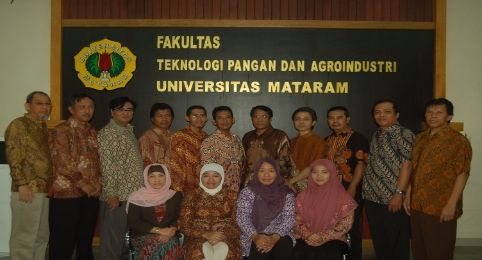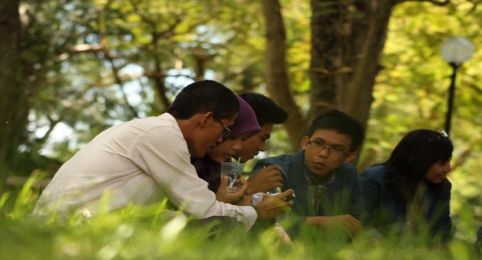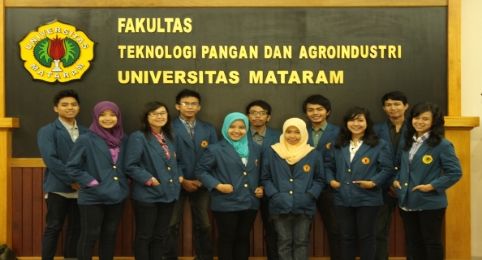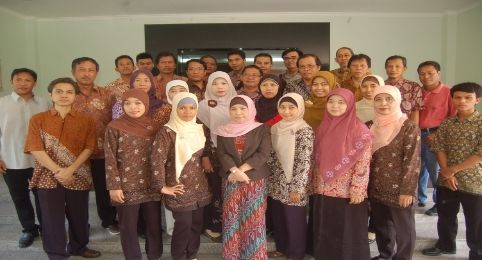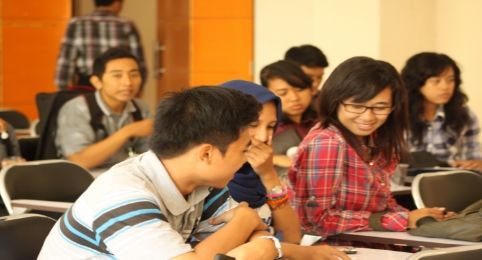Dosen FATEPA UNRAM
Para pengajar di lingkungan Fakultas Teknologi Pangan dan Agroindustri (Fatepa) UNRAM berasal dari lulusan dalam dan luar negeri universitas ternama dengan pendidikan tertinggi Profesor yang ahli pada bidang masing-masing dan telah berpengalaman
Tempat Belajar yang Nyaman dan Menyenangkan
Kampus Fatepa Unram berada pada tempat yang strategis di pusat kota dan satu wilayah dengan kantor Rektorat. Disekelilingnya ditumbuhi pohon rindang sehingga menciptakan suasana yang teduh dan sangat mendukung dalam proses segala aktivitas mahasiswa
Lets join With Us
Bergabunglah bersama kami. Dengan sarana dan prasarana yang memadai serta didukung oleh lingkungan nyaman dan diajar oleh dosen yang berpengalaman mari kita wujudkan Fatepa Unram yang bermutu, dinamis dan inovatif di bidang pangan, agroindustri, dan biosistem berwawasan lingkungan
Keluarga Besar Fatepa UNRAM
Kami siap melayani dan memenuhi kebutuhan anda karena anda bagian dari keluarga kami. Mari maju bersama kami di Fakultas Teknologi Pangan dan Agroindustri Universitas Mataram
Menciptakan Lulusan Bermutu, Dinamis dan Inovatif
Lulusan mahasiswa FATEPA UNRAM bergelar S.T.P dengan masa studi rata-rata4 tahun dan sebagian besar telah bekerja di berbagai instansi pemerintah dan swasta, industri, dinas dan lain-lain. Sekarang saatnya unutk perubahan yang lebih baik bersama kami
Sabtu, 23 Maret 2013
The Analysis Of Water Requirement For Rice Plant By Using The Cropwat 8.0 Software In Embung Siwi Irrigation District Area Of Eastern Lombok, West Nusa Tenggara
Kajian Pengaruh Perbedaan Rasio Tepung Terigu, Mocaf Dan Tepung Jagung Terhadap Komponen Mutu Mie Basah
C1C 008 026
Baiq Rien Handayani and Wiharyani Werdiningsih
Keywords: noodles, wheat flour, mocaf, and corn flour.
Pengaruh Penambahan Rumput Laut Eucheuma cottonii Merah Terhadap Beberapa Komponen Mutu Stick Mocaf (Modified Cassava Flour)
Kajian Substitusi Tepung Jagung Dengan Tepung Pisang Terhadap Sifat Fisik, Kimia Dan Organoleptik Cookies
C1C 008 003
Zainuri dan M. Abbas Zaini
ABSTRACT
The substitution treatment of corn flour with banana flour resulted in non-significant differences on the water content, the ash content, the texture (measured objectively with a penetrometer and measured subjectively using sensory test), the flavor and the aroma of cookies. However, the treatments caused significant different on the protein level, the color measured subjectively and the value of L, a, b measured objectively with Colorimeter (MSEZ User Manual). In general for all treatments, substitution of corn flour with banana flour in cookies processing resulted in cookies that are slightly preferred by panelist. Meanwhile, the panelist only slightly preferred the cookies that produced from the treatment of 30% corn flour substitution with banana flour.
Key words: Corn Flour, Banana Flour, Cookies






